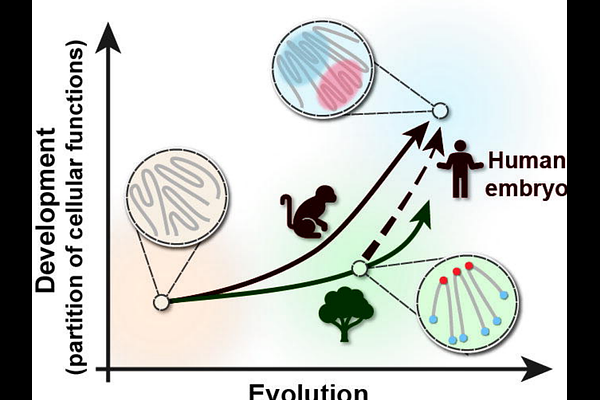The evolution of high-order genome architecture revealed from 1,000 species

The evolution of high-order genome architecture revealed from 1,000 species
Che, Y.; Stephen, B.; Lin, H.; Yang, X.; Xie, Q.; Liu, Y.; Meng, D.; Ye, K.
AbstractSpatial genome organization plays a crucial regulatory role, but its evolution remains unknown. Leveraging Hi-C data from 1,025 species, we trace the evolutionary trajectories of 3D genome, through two higher-order architectures, global folding (spatial organization of karyotype) and checkerboard (chromatin compartments). Early life forms, including prokaryotes and unicellular eukaryotes, mostly display random configurations. Through the evolution of plants, global folding became the prominent architecture with eudicots and remained dominant. Animals, however, progressively developed stronger checkerboard throughout vertebrate and invertebrate evolution, and even during early embryogenesis, suggesting a conserved gene co-regulation mechanism. In contrast, plants prefer linear gene clusters over checkerboard. Both strategies of gene arrangement reinforce the biological principle \'structure determines function\': divergent evolutionary paths converge on architectural solutions to meet the greater regulatory demands.